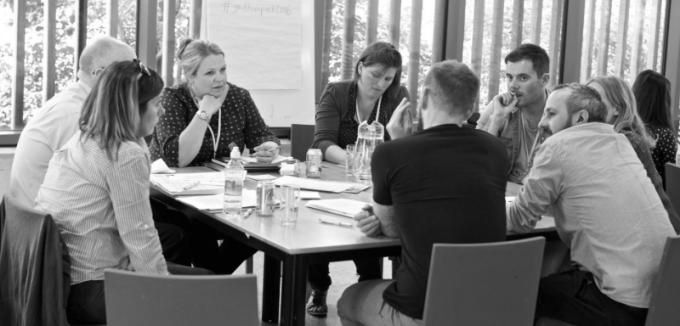A new path for evaluation and impact measurement
2017-08-25
In this blog, Bethia McNeil, Director of the Centre, reflects on how we can collectively shape a new path for evaluation and impact measurement. She argues that we need to do more than just think differently, we need to behave differently.

Social sector organisations would be forgiven for giving a weary eye roll at yet another invitation to ‘look to the future’. The promise of opportunities that might be on the horizon, just hidden from view, is a well-used trope within the third sector. Especially within reports and conferences. I can’t be the only person that mentally sings a Disney tune when they read about a ‘whole new world’ just around the corner.
So, why did we decide that it was a good idea to focus our forthcoming conference on ‘shaping the future’? Because, on this occasion, I believe it’s true. And it may well also be an actual opportunity.
All too often, the debate about impact measurement and evaluation is reduced to one of either technical skills (all you need to know is how to produce a theory of change, and which standardised questionnaire to use) or capacity (and I’m never entirely sure whether we all mean the same thing here). But it’s so much more than this. Not only are evaluation and impact more about culture and enquiry, but to focus primarily on building capacity and skills suggests that all we need to know is sitting somewhere, waiting to be passed on. And I just don’t think that’s how it is, nor how it should be.
Developing our collective understanding about how and why our work with young people contributes towards changes in their lives is not going to be achieved through doing more of what we’ve done so far. Will we reach nirvana when every youth charity has a theory of change? I doubt it.
What if we need to do things really quite differently to see things differently? What if we needed to try some approaches that have never been tried before, and stop doing some things that we’ve been doing for some time? And what if now was as good a time as any to do this? This is what our conference is about, and it marks a new phase of our work through which we want to make this a reality.
At our conference, and in our forthcoming work, we’ll be exploring the evolution of some ideas you will be familiar with, and also what happens when we bring different disciplines together. We will also look at a range of other conditions and contexts that shape evaluation and impact measurement: leadership, cultures of learning, truth claims and power.
I believe we need to set a new path for evaluation and impact measurement. Sometimes, it can be hard to turn back from a path we’ve travelled for some time (especially if lots of other people are on it too), and we must acknowledge this. But we also need to have the collective courage and openness to explore some different steps.
So whose responsibility is it to shape this future path? I think about this a lot, and I’m not sure. I think it’s our responsibility at the Centre for Youth Impact to create space to actively explore it, and to share ideas and resources that help us understand what the journey might involve, and where it might lead. But – to end as I began: on a cliché – this is your journey.
I look forward to seeing many of you at the conference on 11 September, and to working with you in the coming months.
